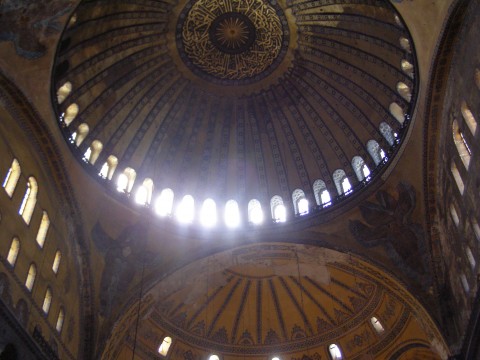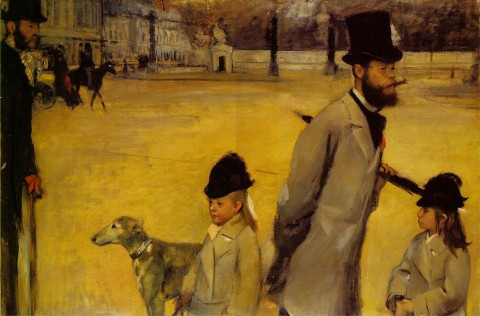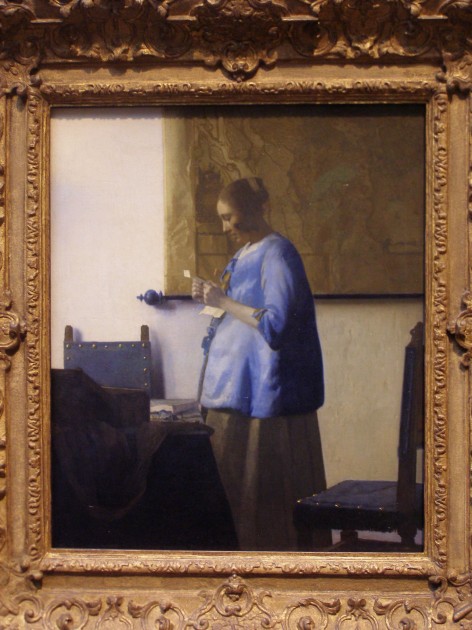Tuesday, September 17th, 2013
Recurring Themes from 2012-2013 Courses
Today, while organizing my desk, I discovered a scrap of paper. At the end of this past academic year in June, after teaching a very full load of ten courses for the whole year (not counting my other responsibilities as an internship advisor!), I sat down and thought about some of the themes which overlapped between my different art history classes. I didn’t consciously plan to have integrated themes; these themes and ideas often organically developed and revealed themselves as the courses progressed. I’m going to transcribe the original note here, so I can remember (and add to) this list of themes. I think these themes are indicative of me and some of my own interests in relation to my discipline, but perhaps they also reveal something about human nature and recurring themes throughout history in a sort of Hegelian way.

Isidorus of Miletus and Anthemius of Tralles, dome of Hagia Sophia, 532-537. Istanbul. Photo belongs to author
LIGHT
- The mystical dome of Hagia Sophia, in which the dome hovers on a “golden chain” of light (to quote the ancient historian Procopius)
- Abbot Suger and Gothic cathedrals, wherein light embodies the presence of God (in a Pseudo-Dionysius the Aeropagite way)
- Baroque tenebrism
- Impressionist studies of light and color
SNAKES
- Ancient snakes and their associations with power and rejuvenation
- Etruscan demons in tomb wall paintings
- Eve and her associations with the snake and temptation, due to the account of the Garden of Eden
- Medieval personifications of female vices which were depicted with snakes or with snake-like imagery
- More associations with snakes a previous post
PROPAGANDA
- Looting and defacement of images in the ancient Near East as propagandistic messages of conquest
- Roman imperial portraits as forms of political propaganda (typified in the Augustus of Prima Porta statue), which often connects rulers with the gods
- The Justinian mosaics at San Vitale as an example of political propaganda (including the visual connections between the depiction of Justinian on the sanctuary wall and the mosaic of Christ in the apse ceiling).
- Art used as propaganda for the Catholic Counter-Reformation in the late 16th and 17th centuries
- Picasso’s Guernica as propaganda to expose and decry the inhumanity caused by the aerial bombing of Guernica on April 26,1937. The bombing performed by General Franco’s German and Italian allies.
VIRGINS
- Athena, as a goddess who chose to remain a virgin. Other Roman goddess-virgins include Diana, Minerva, and Vesta
- The Virgin Mary
ESCAPISM
- The Impressionists as escapists who avoided including direct references to the recent, bloody Commune and Franco-Prussian wars in their paintings. The figure of Baron Lepic, on the right side of Degas’s painting Place de la Concorde (above) conceals an allegorical figure of Alsace. At the time, the figure was draped in black allude to the recent cession of the area to the Germans.
- Primitivists as escapists from the modern “civilized world,” particularly seen in the art and biography of Gauguin
- Dada humor can be interpreted as a form of escapism, in order for artists and viewers to find solace from the horrors of World War I.
EVERYDAY PEOPLE
- Ancient Greeks depicted in the Panathenaic Festival on the Ionic frieze of the Parthenon
- Examples of veristic portraits from the Roman Republican period
- Dutch Baroque genre scenes (as seen in the painting by Vermeer, above)
- The Realist paintings of Courbet and other later 19th century paintings which capture la vie moderne (a nod to Baudelaire’s essay, “Le Peintre de la Vie Moderne”)
Do you notice any other works of art that could relate to these thematic categories? What are some of the recurring themes which pop up in your various art history courses?



Holy cow, Monica, nine courses?! That’s insane! The last uni I worked at wouldn’t let anyone teach more than five over the course of the year, and full-time faculty rarely taught more than three.
It was an insane year! (And I just realized that I miscounted: I actually taught TEN courses last year!)
The heavy load partially was due to a misunderstanding with another local university. I ended up teaching full-time at my regular university, but also teaching part-time for this other school (until their new hire arrived in the spring). At my university, seven courses for the whole year is considered full-time. I hope I don’t have that crazy of a teaching schedule again!